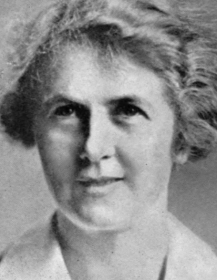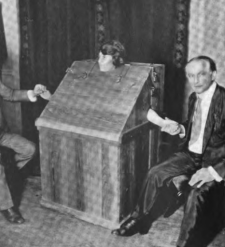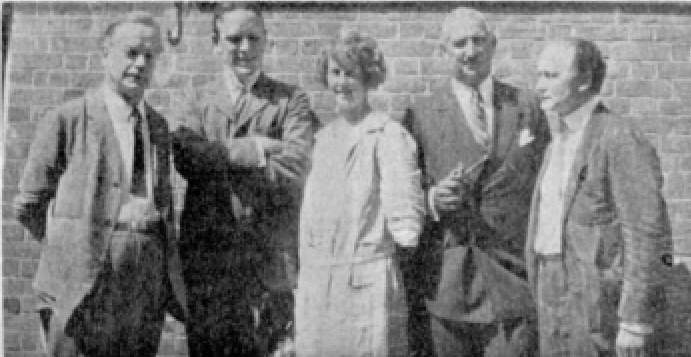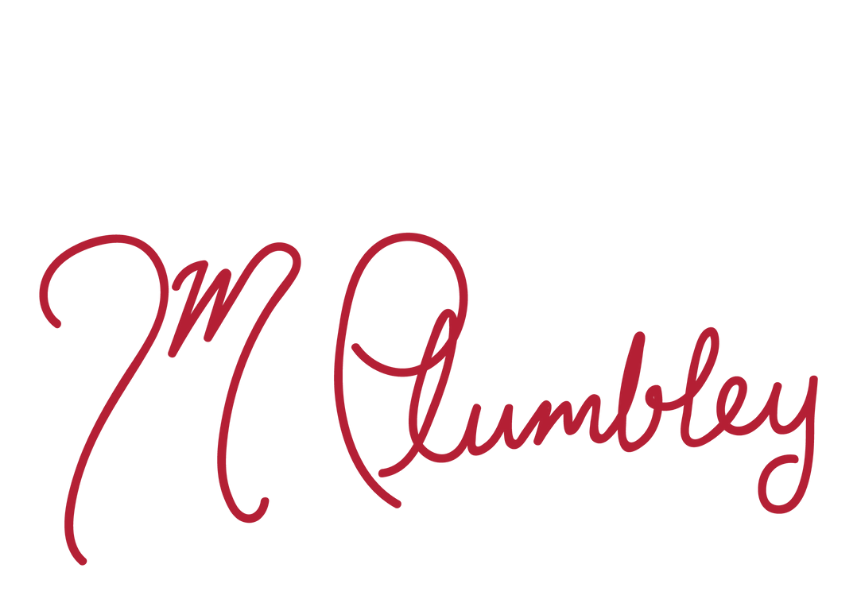I recently read one of the best nonfiction books I’ve come across in years: The Witch of Lime Street, by David Jaher. Jaher relates his slice of history in such a compelling way that instead of just using it as fodder for my fiction (as I’d intended), I wanted to share a piece of it here.
To orient ourselves: we’re going back to the 1920’s, when, after a horrific numbers of deaths from World War I and the Spanish Influenza, the world experienced a surge of interest in contact with the afterlife. With this surge came a number of scammers seeking to make money off of people’s grief, as well as a counter-force of people–scientists, mostly, and stage magicians, who knew too well some of the tricks the scammers pulled–to expose them.

Rather creepy photo of Mina Crandon, courtesy of Wikimedia Commons.
Early in the March of 1923, a charming, pretty upper-class Bostonite named Mina Crandon went to her first seance. She did it on a whim, almost as a joke, deciding to go while still out on her customary horse ride with her friend Kitty. Thus Mina found herself in a Spiritualist minister’s study in the middle of the afternoon, still wearing her riding clothes and trying not to laugh.
Then the medium started to speak. He channeled a strapping blonde man Mina was shocked to recognize: her brother Walter Stinson, dead some dozen years. The medium knew things about him that he shouldn’t have. He had a message for her from Walter: far from making fun of clairvoyants, she was about to become one herself, and one of the most powerful of the age.
Mina resisted the idea–she was a ruthlessly clever woman who had never had much of an interest in ghosts before–but in the end, she found herself in the dark of her parlor, holding hands with her friends and channeling a spirit that would earn her international fame: that of her own brother.
Walter was the centerpiece of his sister’s performances. He was the spirit that came most often, and was fiercely protective of his baby sister–or, as he called her, “the kid.” He was every bit as witty as Mina was, but bolder, ruder, and more temperamental. In an age where sham mediums forced their sitters to endure supernatural “miracles” in complete darkness, Mina (by Walter’s grace) held her seances in the light of a red lamp. Apparently, she and her brother had nothing to hide.

Mina Crandon emitting ectoplasm during a seance, also courtesy of Wikimedia Commons.
A typical seance went like this: the sitters would sit in a circle in the Crandon’s parlor and hold hands (oftentimes, volunteers or later psychic investigators would also hold down Mina’s feet, in an attempt to prevent fraud). Sometimes Mina would go quiet and nod off into a trance; others she would sit still, waiting like the others. Then a hair-raising whistle would cut through the silence, announcing Walter’s arrival. (Mina herself had never been able to whistle.) His voice–husky and very different from Mina’s own–would sound from different parts of the room: over the table, in the corner, next to someone’s ear. He would curse, crack jokes, and sing along to hit tunes that played suddenly on the Victrola in the other room, voice always coming in loud and clear, even when everyone at the table had their mouths full of water, including the medium herself.
But vocal productions were by no means the only way Walter impressed Mina’s guests. Under increasingly rigorous scientific tests (for Mina and Walter were beginning to draw attention), he not only did typical ghost things like rap on walls or levitate the table, but also:
- Made said table lurch toward people, rear up on its hind legs like a dog, or chase people out the room and into the hallway
- Stopped clocks, on command, to whatever time the sitters asked for
- Rang gongs even as investigators held them in their hands
- Made bells encased in a “fool-proof” plastic case ring on command
- Pinched and poked people, and removed delicate pins from sitters’ hair
- Blasted people with cold air in closed rooms
- Made Mina’s spirit cabinet variously shoot across the room, splinter apart, and explode

One of said rigorous tests, courtesy Wikimedia Commons.
Many Spiritualists were convinced that Mina–who now called herself Margery–was not only legitimate, but, as Walter had predicted, one of the most powerful mediums of her age. Some scientists became convinced also, when all their restraints and checks did nothing to hamper her. Mina was nothing but accommodating to these tests–showing them around house, and with mock seriousness explaining how various pieces of her furniture might be used in what her enemies called sham productions. She was funny and pretty and fashionable, and most everyone who met her ended up laughing and having as much fun as she did.
Most everyone, but not all. Mina made friends in high places–Sir Arthur Conan Doyle being a major one–but she also made famous enemies, including the implacable Harry Houdini.

Mina with Houdini and other investigators.
In the end, things did start to unravel–I would recommend reading Jaher’s book to find out how, because a) I don’t want to steal his thunder too much and b) there is not nearly enough room to cover it here. The more Mina tried to impress people–the more wild the stunts the public demanded–the less real her performances became. But the veracity of Walter’s personality remained.
Toward the end of Mina’s career Walter spoke through another medium–Eileen Garret, an Irish psychic that channelled messages and information. Without knowing who Mina was, Eileen identified her as a powerful medium, and spoke with the voice of a young man who addressed Mina as “kid” and correctly identified the name of their childhood dog. Mina’s heart must have stopped in her throat when she heard his message: “Kid you certainly are an old fraud, but I am in on it.”
Mina’s son–who had the dubious honor of growing up around all of this supernatural hullabaloo–said of his mother that some of it had been real, especially in beginning. The full knowledge of just how much of it was died with Mina herself.
And so far as I know, nobody’s been able to call her up and ask.
Have you ever exploded pieces of furniture during a seance? Leave your story in the comments below.
Featured image by engin akyurt.





0 Comments